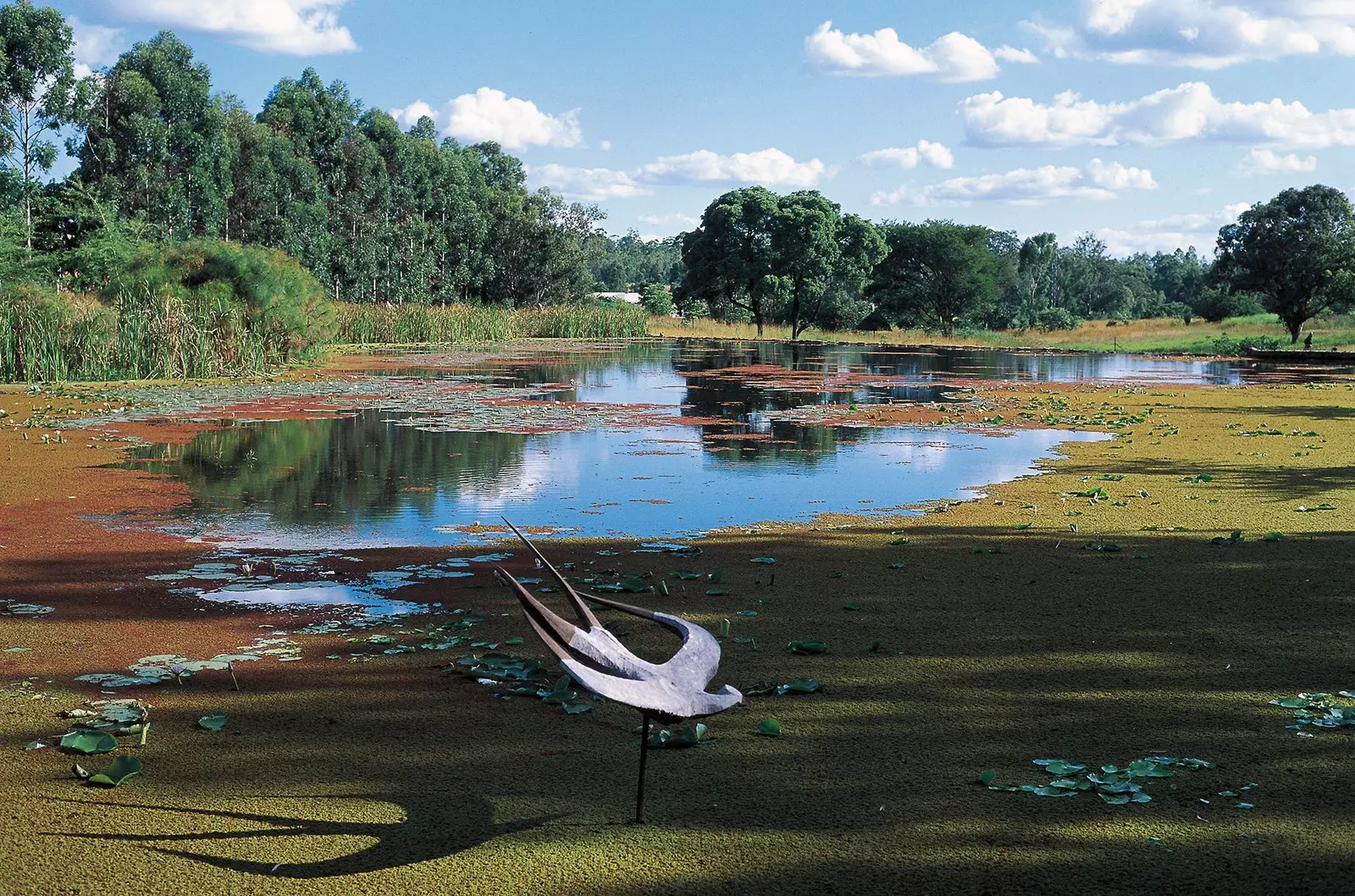
This unique museum of Shona art will captivate you
Zimbabwe It's a very beautiful country. It has the strength and color of Africa and a formidable creativity to express your emotions through any form of art.
Crossing the towns, along the roadside, at the door of the restaurants, there is always the occasional stall where they sell folk craft . But it is not just any craft; the elegance of their designs can be seen in wood carvings, painted fabrics, or simple wicker baskets.
All this was already warned by the art historian Frank McEwen when, in 1957, he assumed the leadership of the National Gallery in the capital of Zimbabwe - then Salisbury, now Harare.
McEwan had specialized in Paris in the african art and in his influence on painters of the stature of Pablo Picasso or Henry Moore. Overwhelmed by the enormous artistic potential of Zimbabwe he founded Alternative Shona Art Schools even in times of apartheid, since the independence of Southern Rhodesia - the old name of the country - did not come until 1980.
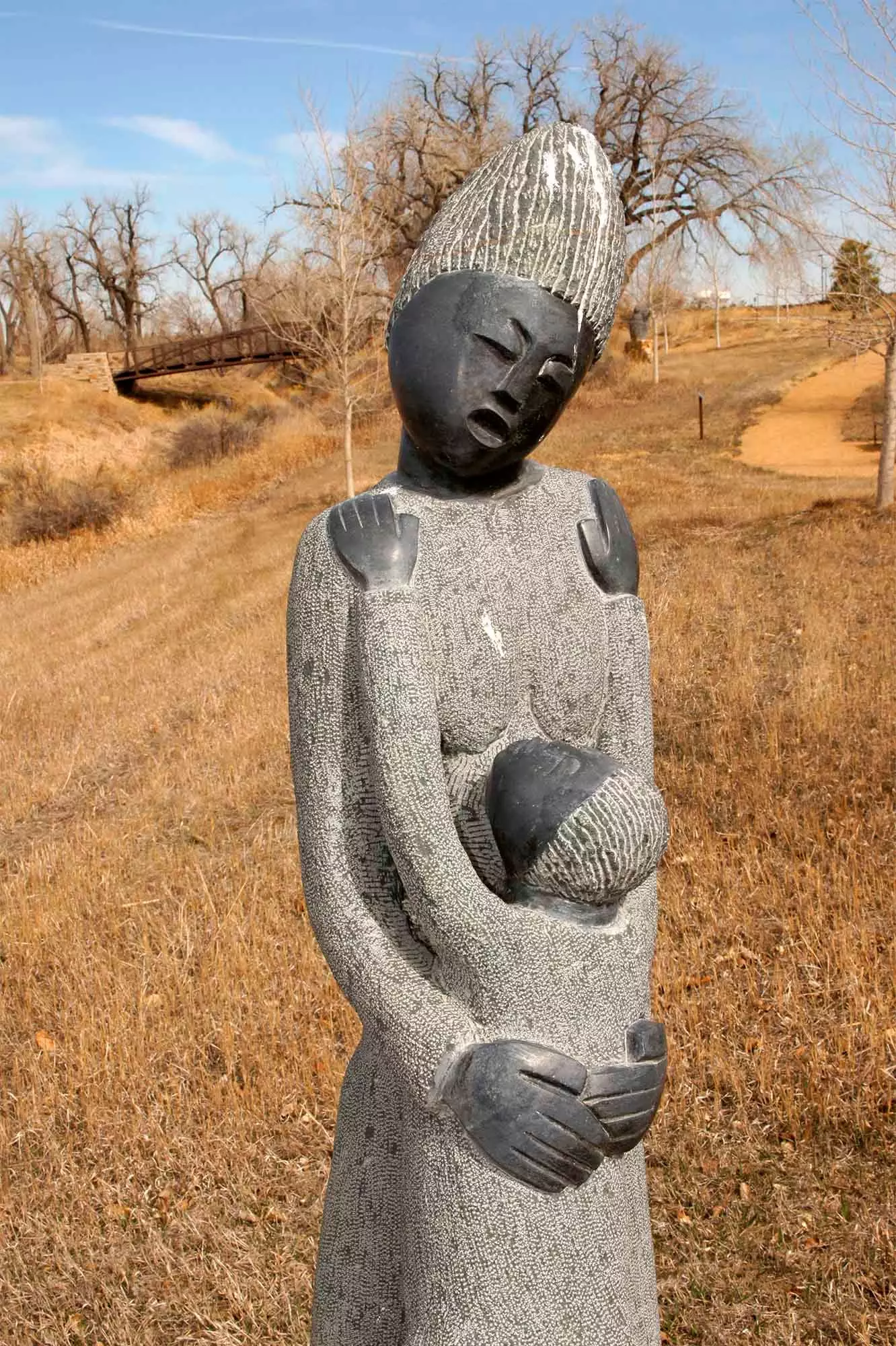
One of the sculptures in Centerra Park
These centers functioned as nests for the development of the stone carvers . Some were descendants of the Shona ethnic group, from which it took its name early on, back in the 1960s.
Shortly after, Tom Blomefield , another key figure in Shona art, founded the art colony of Tengenenge , and in 1970, Roy Guthry created the Chapungu Sculpture Park , a name alluding to the Zimbabwean eagle, which protects from danger and is the bearer of news.
of the little permanent gallery with which Roy Guthrie opened the Chapungu Sculpture Park in Harare, at almost 90,000 meters that he has today, have passed many fruitful years , in which the Chapungu Sculpture Park in Centerra , Colorado (USA) with more than 100,000 acres and around 80 sculptures. They have been consolidating the wisdom and expressive power of traditional african art through those carved stone sculptures showing Zimbabwean Shona art.
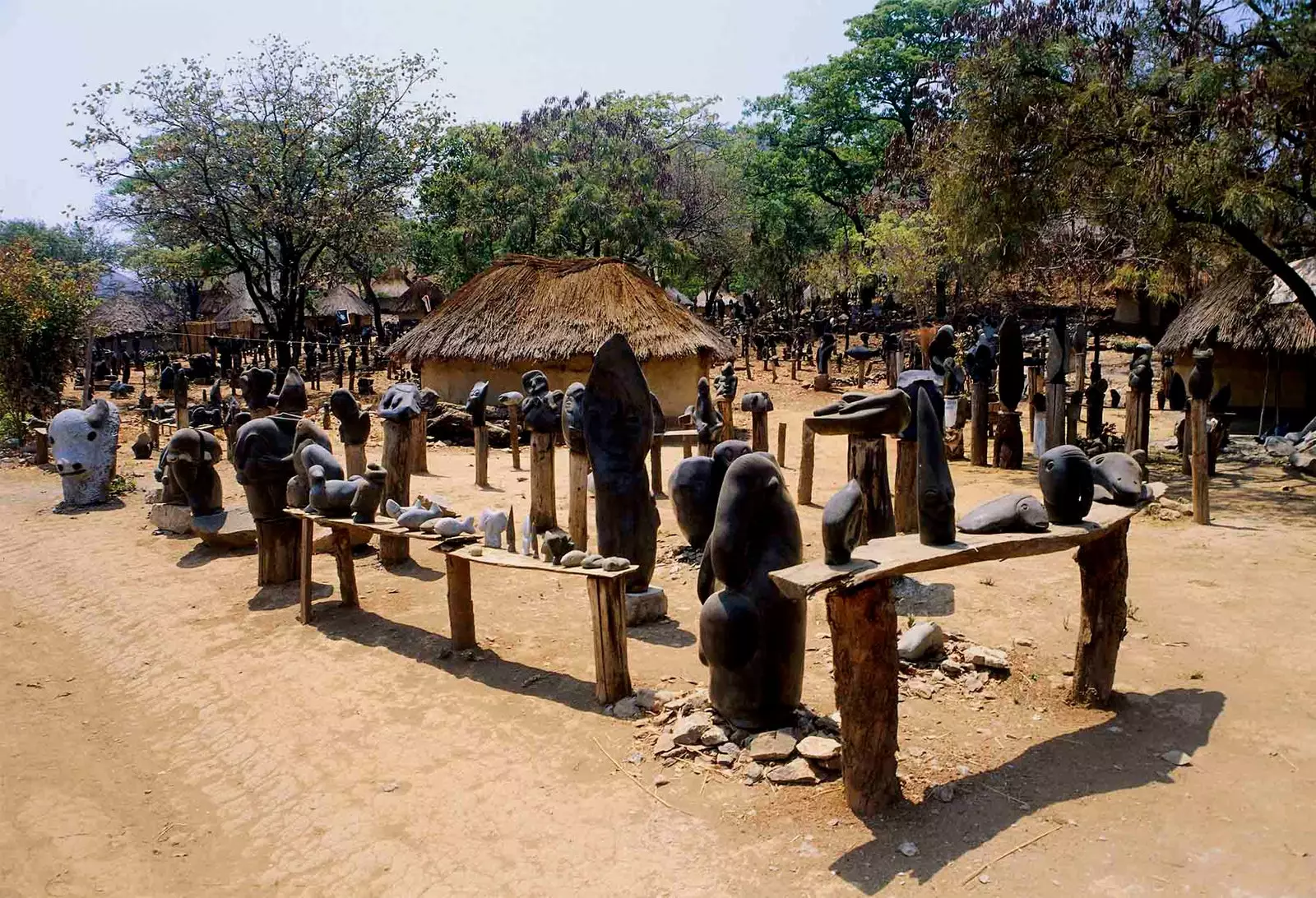
The Tengenenge Art Colony still stands
VISITING CHAPUNGU
Entering Chapungu supposes leave the outside world behind to dive into innermost of human expression that the Park's sculptors -some young, others not so young, some famous and others just starting out- have masterfully captured in stone.
With the monotonous sound of the hammer, the disturbing rumble of the chisel or the scratchy noise of the sandpaper as background music, the tour of the Park, talking with the artists, buying their sculptures, or simply contemplating them, is a time travel and in the most ancestral sensations of Africa and of the human being.
eyes are lost , do not know where to start, although at a first glance, the sincerity of the people, the willingness to enjoy even in adverse circumstances and the creative ability , have been embodied in the retina. The colors of the stone range from mukura -Shona word that defines the red african earth tone- ; the green of opal; leopard jasper -the stone of truth, since it is said that whoever wears it can never lie-; the ancient serpentine; dolomite; the jade; the cobalt...
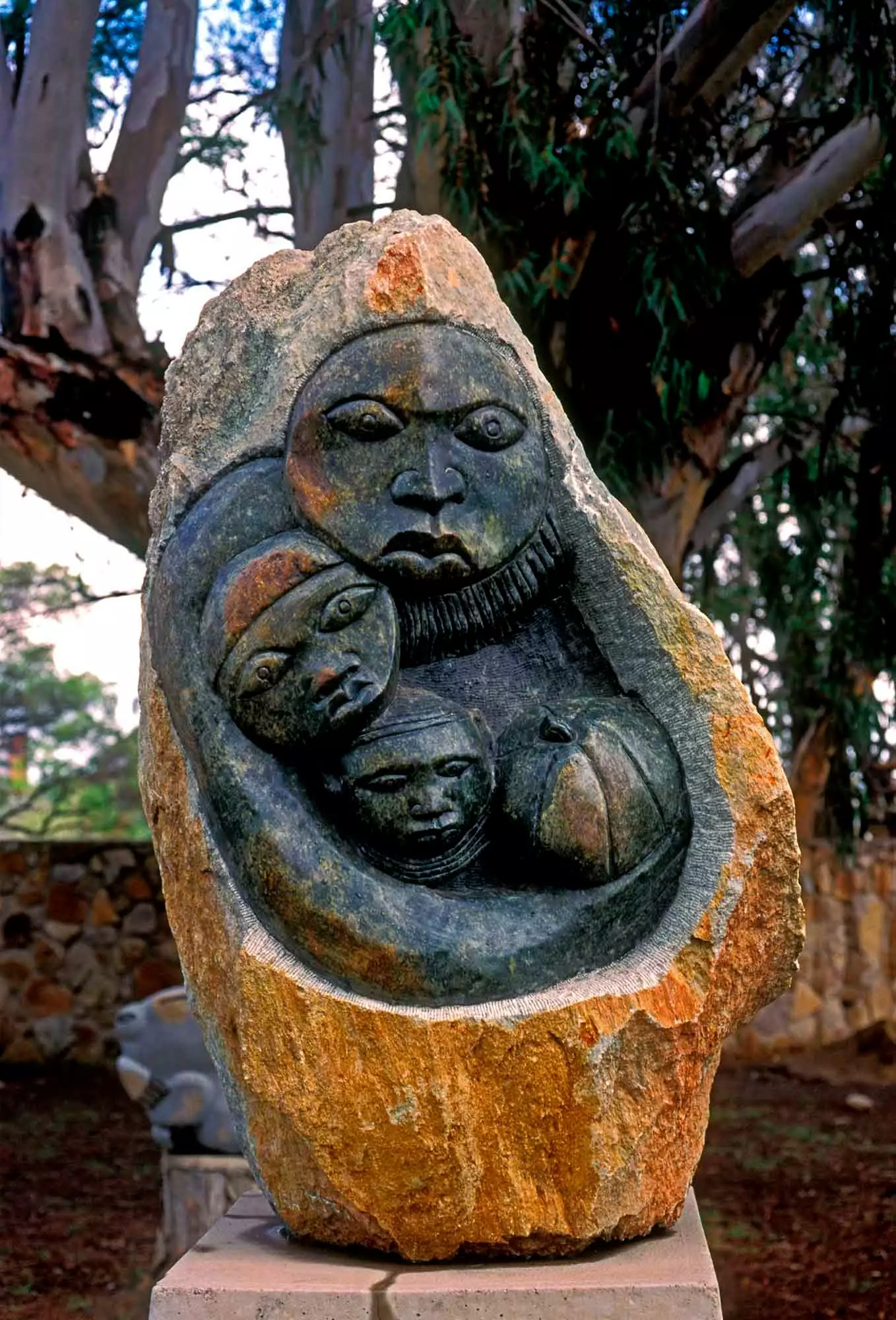
One of the Chapungu statues
The lines of the Shona sculptures are simple and their forms, basic , but from all emanate an extraordinary sensuality. Sadness, joy, love or disenchantment that its creators wanted to transmit through their work.
It is no accident that Zimbabwe has given so many stone carvers . They have the geological formation great dam , supplier of all kinds of rocks -among them, the streamers of varied textures and colors, including the hard springstone (spring stone) -.
In fact, the ancestral Shona ethnic group built the monumental bastion The Great Zimbabwe , today a World Heritage Site, made of granite stone. Steatite birds and talc bowls have been found there, evidence that stone art it comes from yesteryear.
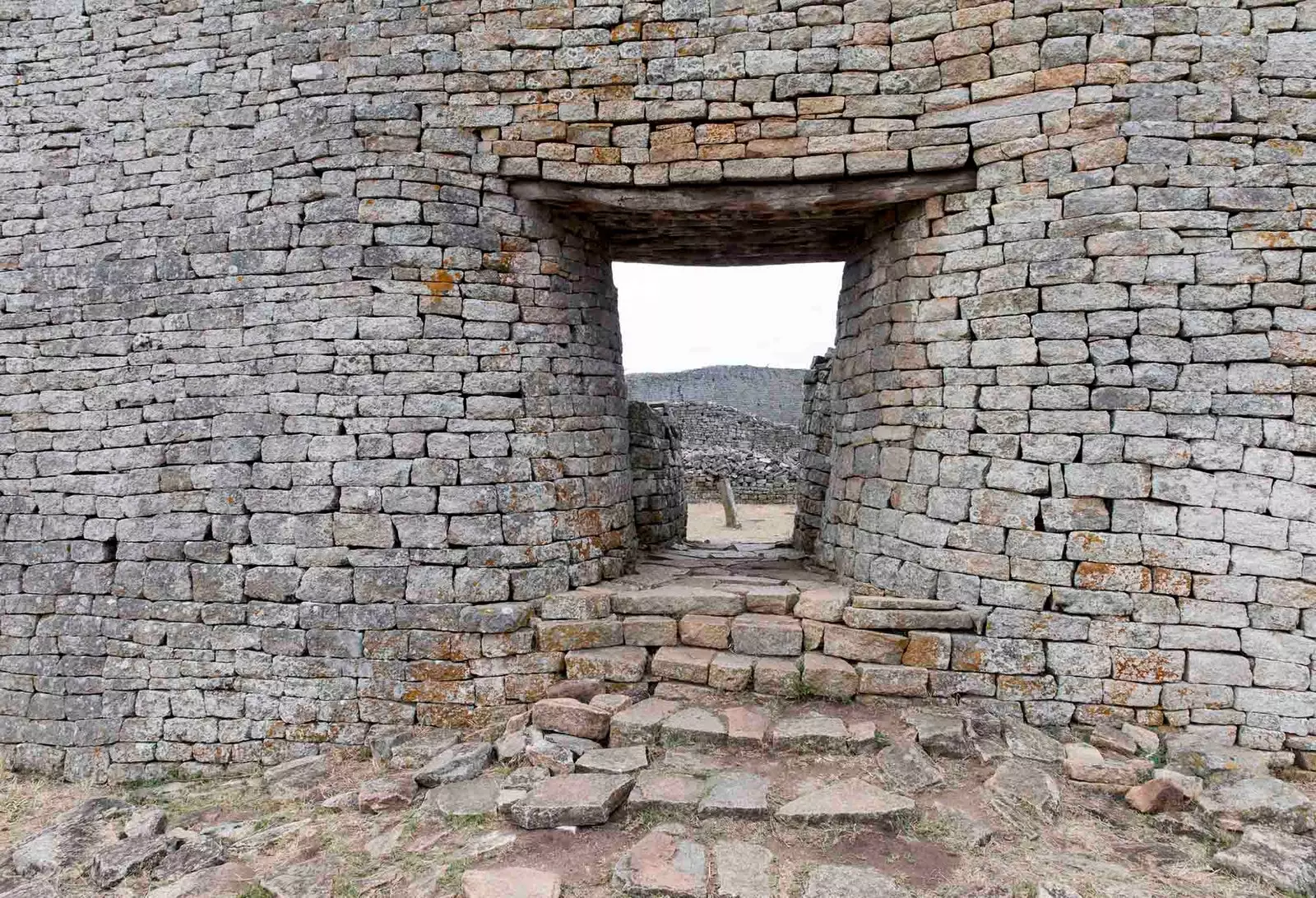
The Great Zimbabwe
REPRESENTATIVES OF SHONA ART
the sculptor Joram Mariga, born in 1927, was the key artist in Shona sculpture, so much so that he has been called father of zimbabwe sculpture . Essential motor for his influence on the artistic community from 1950, friend and collaborator of Frank McEwen , he was undoubtedly one of the best sculptors of Shona art with soft lines and big eyes.
As the master affirmed, realism must be avoided, since the sculptures are beings capable of thinking and seeing eternity for themselves. His carvings have featured in exhibitions in the UK, New Zealand, the Netherlands, and Zimbabwe.
Another fundamental figure in Shona art, and therefore in the Chapungu Sculpture Park , it is Lazarus Takawira (1952). As the youngest of three sculptor brothers (John, Bernand, and Lazarus), he grew up listening to the Shona legends of his mother Mai de him, potter.
Perhaps it was his maternal influence that made her focus his art on the woman portrait as a source of life, beauty and joy.
His works can be seen in the Rodin Museum of Paris, in the world Bank in New York, at the African Museum in Bombay and, of course, at the Chapungu Sculpture Park, where sculptures by his brothers are also exhibited.
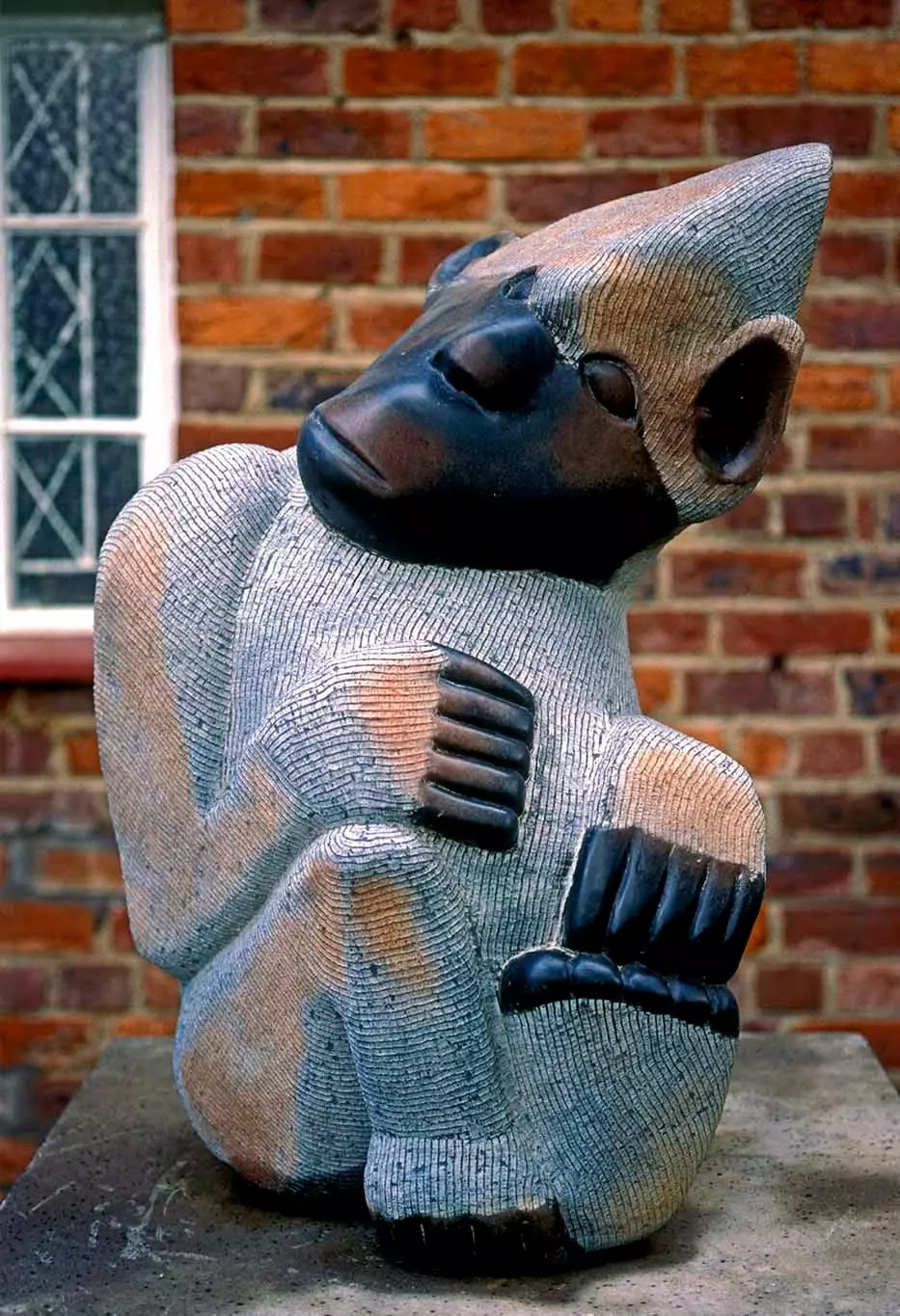
Sculpture by Joram Mariga
Cephas Mukundi, for his part, rescues from the stone his love for animals, especially for rabbits , which are the center of his theme.
Starting as a mere observer in Chapungu, where he worked as a carpenter, he dared to tell stories thanks to the dexterity of his hands, and his fantasies became small rabbit sculptures stalked by danger, running and jumping, or birds and insects, which he also sculpts in his eagerness to recreate the natural bush life in Zimbabwe.
Cephas affirms that sculpture is something connatural in him, a extension of the drawings of him at school , a way of expressing yourself. His work has been exhibited in the Royal Botanical Gardens London and at the Missouri Botanical Gardens.
Brian Nyanhongo is another key name in the world of Chapungu. He is one of the 19 children of the well-known sculptor Claudio Nyanhongo , of which nine are also sculptors like him. He had as a mentor Roy Guthry, with whom he worked as a personal assistant.
His works, which speak of the daily life of Shona man, are exhibited in various museums and institutions in United States, Germany, England and South Africa . Its opal stone in shades of green Wishes, which represents loneliness and longing for affection, is beautiful.
The Chapungu Sculpture Park has also offered a place in the world to representatives of Shona art such as Henry Munyaradzi, Obert Nyampipira, Dominic Benhura, Cosmos Muchenje Jorum Chiyangwa, Lloyd Mwarowa, Taylor Nkomo , Gift Tembo and many other magicians, who, although they have not freed the genie from Aladdin's lamp, they have extracted it from the stone.
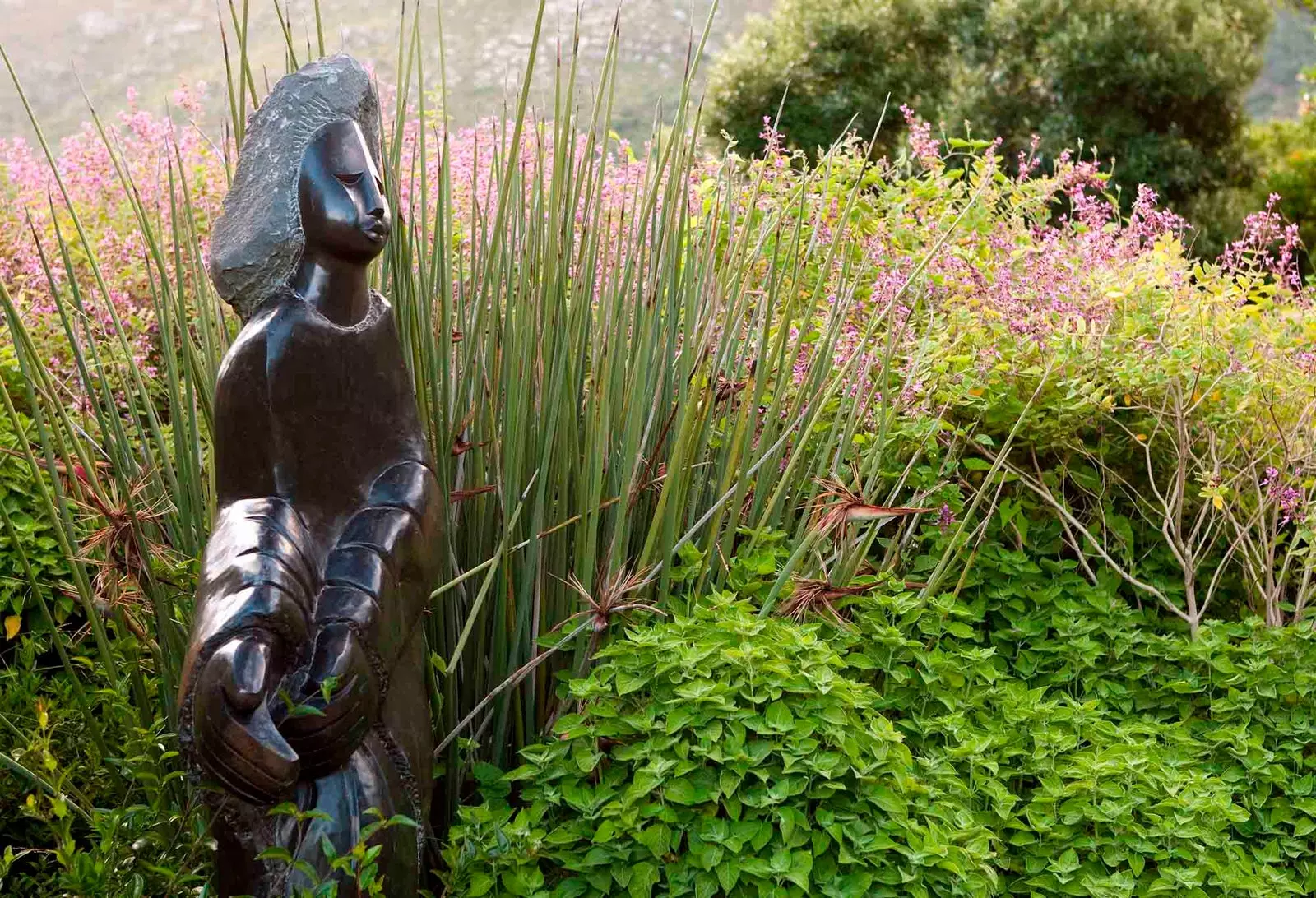
Sculpture by Brian Nyanhongo in South Africa
